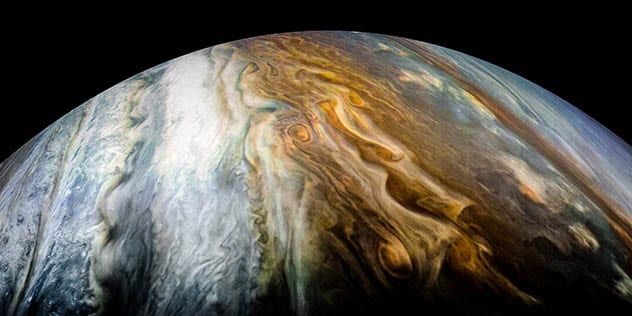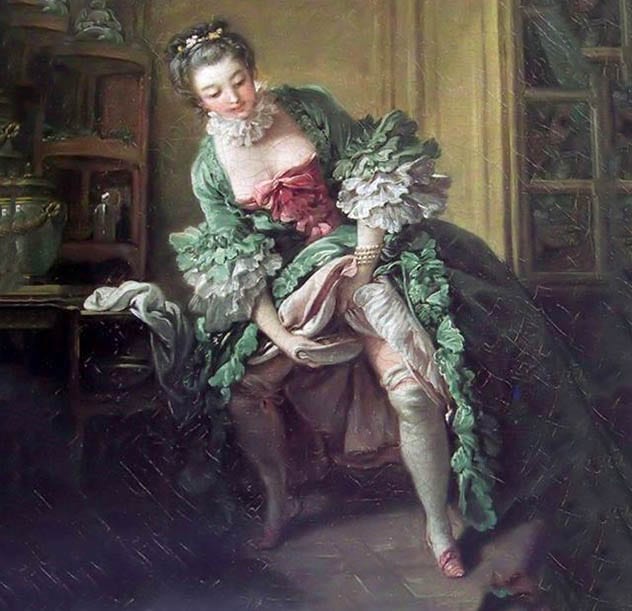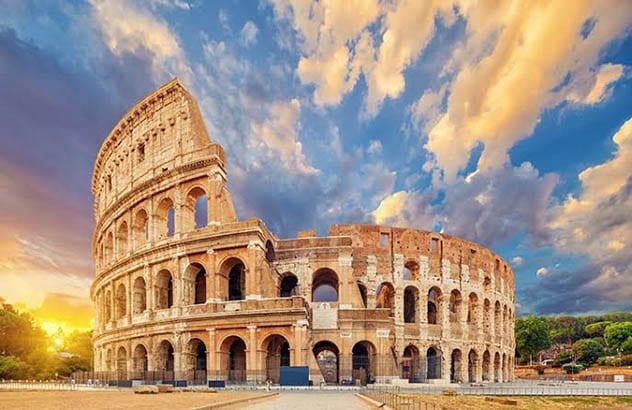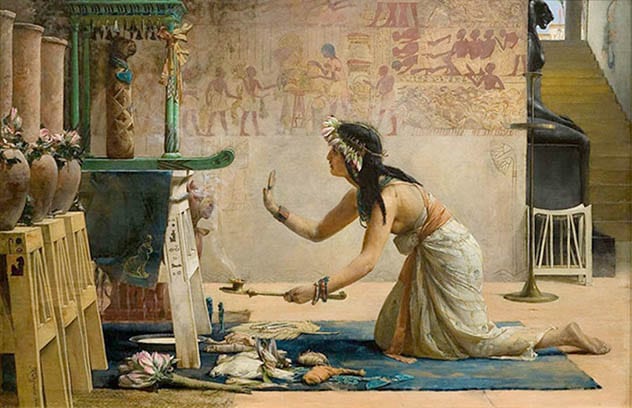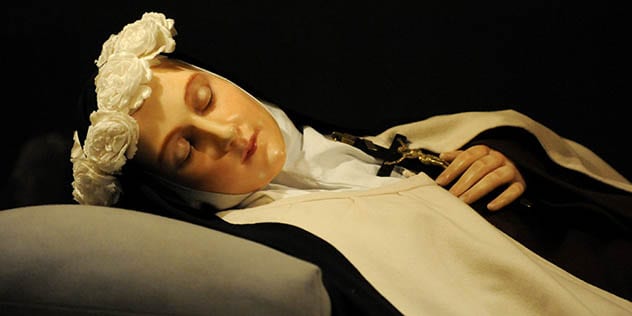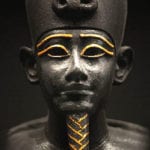It was a precious and rare vial of the 1905 perfume, L’Origan, that decided me on the hobby. I openened the box in which it had been delivered and was immediately enveloped in the scent that led one newspaper reporter to exclaim: “All Paris smells of L’Origan!” The perfume had leaked slightly. It was a moment of ecstasy. I was smelling the world as people long past had smelled it. The men who made this fragrance were now just footnotes on the fading pages of history . . . but this was their legacy and I, now, was a part of it. From that day forth perfume and the scent of the world became my absolute obsession. I acquired all of the rarest and most unusual perfumes and ingredients I could and began to make my own fragrances. I even published many of my perfume formulas online. I focussed all of my attention on understanding odor: its psychological effect on us and the intensely powerful control it has over our sense of memory. Watch this video on YouTube See Also: Top 10 Incredible Sound Illusions As a 16 year old, my first vacation to Europe blew my mind. But it wasn’t the Eiffel Tower, Buckingham Palace, or the Venetian canals that stayed with me long after the trip ended—it was the mundane aspects of life: the things that locals take for granted: the color of road markings and signs, the posters in shop windows, the local snack foods, and the sounds and—most-significantly—smells of the place. And that leads us to this list. Herein is a compilation of ten significant places and things and the smells of them. Please be advised, some of the content in this list is disturbing. Afterword: happily I can report that in 2022 I finally went from hobbyist to professional and launched Frater Perfumes a luxury perfume house.
10 Space
Space is a vacuum; it shouldn’t have a smell. And yet it does. First off, there is a giant ball of sweet fruity rum smelling gas right in the center of the galaxy (the chemical is called Ethyl Formate). Why is it there? No one knows. From reports of astronauts we know that other odors of space are also food related with some referring to it as sulfurous and meaty. And another astronaut, Thomas Jones, has reported: “When you repressurize the airlock and get out of your suit, there is a distinct odor of ozone, a faint acrid smell, [ . . . ] also similar to burnt gunpowder or the ozone smell of electrical equipment.”[1] International Space Station Science Officer, Don Pettit had his own observations: “The best description I can come up with is metallic; a rather pleasant sweet metallic sensation. It reminded me of my college summers where I labored for many hours with an arc welding torch repairing heavy equipment for a small logging outfit. It reminded me of pleasant sweet smelling welding fumes. That is the smell of space.”[2] Obviously in a vacuum you can’t smell anything directly, but there are millions of particles floating around that do have a scent and it is when they adhere to the suits worn by the astronauts or enter through the airlocks that these observations are made. Interestingly NASA has tried to replicate the scent on earth as part of their training for future astronauts.
9 Sundry Planets
While we are on the subject of outer space: what about the planets? We can guess roughly the odor of the different planets due to the chemical composition of their atmospheres. Venus smells of rotten eggs due to the clouds of sulfuric acid in the atmosphere, and similarly sulfur dioxide and hydrogen sulfide is the cause of Mars and Uranus smelling the same.[3] Jupiter: because each layer of its atmosphere is made up of different chemicals, the scent depends on where you are. In some layers you will smell delightful bitter almonds due to the not-so-delightful hydrogen cyanide, while in other layers (the ones near the top) you’ll smell the foul smell of ammonia (cleaning products). That almond-like smell of cyanide actually occurs naturally in flowers like jasmine in the (basically harmless) form of benzyl cyanide.[4] The rest of the planets are mostly without a distinct scent due to atmospheres of largely odorless gasses.
8 Death
When a person lays dying, one of the most common odors emitted is that of acetone (the very fruity smelling chemical that is used as nail polish remover). In some cases, however, that is combined with unpleasant odors resulting from the particular illness the person is dying from. Once death has arrived, the body begins to decompose and a number of rather appropriately named chemicals emerge: cadaverine and putrescine are the first and, as their names suggest, they smell of rotting flesh and putrescence! Why do our bodies release these chemicals? Some believe that it is an evolutionary trait designed to be a warning beacon to others that danger is near. It is believed to spark off the flight or fight mechanism in humans.[5] Other chemicals are also released: hydrogen sulfide smells like rotten eggs; skatole smells like feces; Methanethiol smells like rotten cabbage; and dimethyl sulfide smells like garlic. A veritable cocktail of vile vapors. Would you be revolted to know that these are all used as food additives and are also used in many perfumes? A little stink adds a lot of beauty to an otherwise sterile combination of ingredients. In nature, these foul additives occur in flowers to attract insects—and similarly they attract us.[6]
7 Versailles Palace
First off, the grossly maligned Queen Marie Antoinette of France did not say “let them eat cake!”. I hesitate to mention it because every website in the world has now copied our list of historical myths from 2007 in which we taught the internet this little fact, but twelve years later we have a new audience so it bears repeating just in case. Queen Marie, and her husband King Louis XVI, lived in Versailles Palace. It is a magnificent place that I strongly recommend you visit when you are next in France. We all imagine that life was full of delightful perfumes, pastries, princes, and pompadours but what we don’t imagine are the other two ‘p’s: piss, and poop. Plumbing was rather lacking in the 18th century and Versailles Palace had minimal built in facilities (flush toilets were in the royal apartments only). As a consequence when nature called, the main option was a little porcelain pot called a bourdaloue. Women had no underwear so they just hitched up their skirts and went to town (as you see in the image above). But the palace is big and sometimes people would be caught unawares. In those cases a quiet corner would suffice. After all, servants would clean up after you later. Combined with the smoke from failing chimneys and a lack of care from overworked servants, the grand Palace of Versailles was a very smelly place to be.[7]
6 The Roman Colosseum
Spectators at the Roman Colosseum enjoyed an enormous number of varied shows: from gladiator fights to live animal hunts with exotic animals. And, of course, at a later period, Christians were killed in the Christian persecutions by a variety of methods including being torn apart by wild animals.[8] But the Roman people were somewhat delicate and found the scent of blood unpleasant so the Colosseum had a very clever trick for helping out. Above the heads of the paying guests was an awning (called the velarium), the purpose of which was to protect people from the harsh sun and to keep off the rain should any fall. Additionally, cleverly concealed tubes would continually spray perfumed water over the awning in order to partly minimize the odor of death, but also to moisten the heads of the spectators and keep them cool. These were supplemented by fountains in the form of statues which also issued forth fragrant water. The primary ingredients in the perfume were saffron, and verbena which, just recently, was outlawed by the European Union for use in any human skin contact products.[9]
5 Drugs
Drugs have been used for millennia in their natural form. It is not until the 19th and 20th centuries that we have been convinced to shun them and take medication in a synthesized form by drug companies. Most of us would probably not recognize the smell of a drug if it hit us in the face (except perhaps marijuana as few people have had a chance to not inhale that at least once). Here is a small list of common drugs and their odors: Opium: this has a sweet slightly burnt marshmallow scent when it is smoked. Heroin: burning heroin releases a very strong smell of vinegar. The higher the quality the less the odor, but all forms will smell to a certain degree. It smells this way because heroin is produced from opium in a method that leaves behind vinegar as a waste product. It is the vinegar smell that drug dogs are seeking. Cocaine: This primarily smells of methyl benzoate, a floral chemical that gives tuberose its rich smell and feijoas their distinctive taste. Drug dogs sniff for this chemical along with vinegar as previously mentioned.[10] Methamphetamine: Meth (and crack) both smell similar to burnt plastic combined with cleaning products like glass cleaner. Frequent use can lead to a person’s skin smelling of ammonia. Delightful.[11]
4 The Titanic
In the early hours of the morning of April 15, 1912 the immense body of the Titanic, rent in two, plummeted to its grave on the ocean floor. More than 1,300 souls were lost that night. Fresh varnish, paint, and newly sawn wood were the initial smells that greeted a passenger aboard the ship. In those days paint was still made with lead and contained high amounts of linseed oil. There would have been the smell of smoke from the coal driven engines and on that fateful night, the wonderful smells of roasting duck, lamb, and beef, all of which were on the first class menu.[12] That same year, the famous French perfume house Guerlain had just released L’Heure Bleue (the bluish hour): “velvety soft and romantic, it is a fragrance of bluish dusk and anticipation of night, before the first stars appear in the sky.”[13] It was expensive and in high demand and would have certainly been smelled by a lot of women on the first class deck. The fragrance can still be bought today and there is no denying that it still has a quality that brings to mind that fateful night. But at 11pm on April 14th, 1912 another smell began to appear: a mineral odor with a metallic edge. It was the smell of an iceberg. Just as ice in your freezer picks up the various odors of other foods stored there, icebergs will take on the scent of their surroundings. Interaction from sea dwelling animals contribute to this, as well as the chemical composition of the water from which the iceberg is formed. Recognizing the faintly metallic smell of ice may not have saved the ship, but it might have increased the total number of survivors. Pictured is the iceberg believed to have been the one that Titanic hit; traces of the ship’s paint are visible on it.
3 Ancient Egyptian Temples
I have a passion for Ancient Egypt. As a teen I couldn’t get my hands on enough books about the ancient civilization. I taught myself to read basic hieroglyphics, I studied the names of all the gods, and I even determined to one day move to Egypt and restore the Pharaonic dynasties of yesteryear. My dream of becoming the next King of Egypt didn’t came to pass, but I never lost my fascination for the place. I am ashamed to admit that I have still yet to visit. If you have been to a Catholic Church you probably know the scent of frankincense and myrrh for they are the main ingredients in the most commonly used Church incense. The Ancient Egyptians used the same resins in their temples, so it was the penetrating scent of incense that most likely met you upon entering the place. And again, like our own Churches, the Egyptians filled theirs with flowers. The most common were lotus blossoms and other marsh plants and reeds. The scent of the lotus is extremely sweet—like fruit. And while that sickly-sweetness would have dominated, the dank marsh plants would have added an underlying scent of water and dirt. Other scented flowers present would have been jasmine with its hypnotic fecal odor of indole, sweet blossoming roses, and the intense scent of fresh mandrake, redolent of dried tobacco.[14] The next likely odor of the temple would be that of food: offerings to the pantheon of gods. Commonly these were freshly baked bread and roasted meats. At this point you can imagine that the temple would have something of the scent of Christmastime in a modern country village! At some times of the year, milk, herbs, and vegetables were offered and after a short time these would have lent a faintly sour and rotten scent to the whole. How more perfect a conglomeration of smells could there be? All the odiferous elements of life united in one place. Combine with that the solemn chanting of ancient priests, the distant sounds of exotic animals kept as pets, and the musical instruments of street beggars and a truly marvelous vision of life in Ancient Egypt emerges.
2 The Holocaust
In 1942 the Jewish Ghettos were disbanded by the Nazi government and mass deportations by train began. There were no stops for toilet breaks, and there were no amenities for those who were ill except for one bucket in the corner which, needless to say, very quickly was rendered unusable. The entire journey from city to camp was drenched in the stink of vomit, feces, and urine. The foulest aspects of man’s animal side were witnessed, within and without the trains. For those in the camps who were witnesses to the cremation of bodies, the smell was unlike anything they had smelled before. When meat is cooked for eating, we smell simply the searing of flesh. Not so when a human body is burnt. The sickening smell experienced daily by those in the camps would have been comprised primarily of a beef-like scent from burning flesh, and a pork-like smell from human fat. This would be accompanied by the noxious odors of sulfur from burning hair and nails, a coppery metal smell from burning blood and iron-rich organs, and spinal fluid which burns with a sickly sweet musky odor reminiscent of perfume. It is a smell so thick, it can almost be tasted.[15] And then there was the aftermath. American GIs arriving to liberate the camps claimed they could smell the stench long before they saw them. “The smell covered the entire countryside . . . for miles around.” One Private said “disease – typhus, dysentery, and tuberculosis – was universal. The crematory had been operating around the clock. . . . [T]he stench of death and of piles of human excrement was overpowering.” [16]
1 Sanctity
Saints have a smell. Well . . . some saints do. The odor of sanctity (Osmogenesia, or Odore di santità as the Italians say) is the opposite of odore di zolfo—the stench of death, sulfur. This odor of holiness comes in a variety of different forms. For some saints it is a smell that begins to exude from their body after death—often combined with incorruptibility, for others it is a sweet fragrance that they unexplainedly emit during their lifetime. And for some it is in the form of sweet smelling liquids that leak from the tomb housing the saint’s corporeal remains. One of the most striking stories of the odor of sanctity is that of St Simeon Stylites (died A.D. 459) who lived 37 years atop a pillar with his skin slowly rotting beneath the objects of mortification he wore. The saint was said to exude the smell of perfume. Tragically the pillar upon which he stood was destroyed by a missile in Aleppo in 2016. So what does the odor of sanctity smell like? Virtually all cases describe it as sweet, with notes of honey, butter, roses, violets, frankincense, myrrh, pipe tobacco, jasmine, and lilies.[17] It is also accompanied by a sense that the smell is otherworldly. In the 2nd Century, St Polycarp’s body, while burning at the stake, was said to fill the air with the smell of incense, and St Therese of Lisieux (her incorrupt corpse protected with a thin layer of wax is pictured above) smelled of roses, lilies, and violets. The wounds of stigmata are also said to emit a saintly odor. Read More: Facebook Instagram Email


